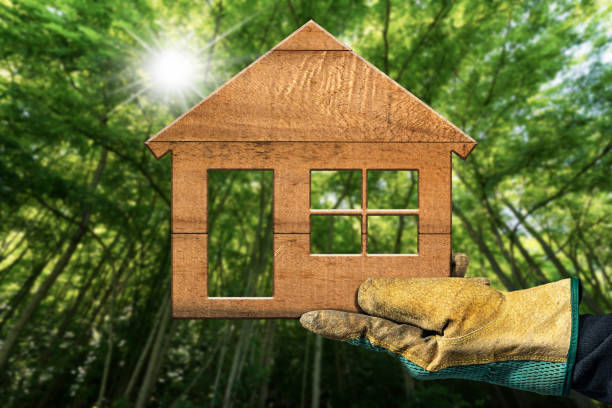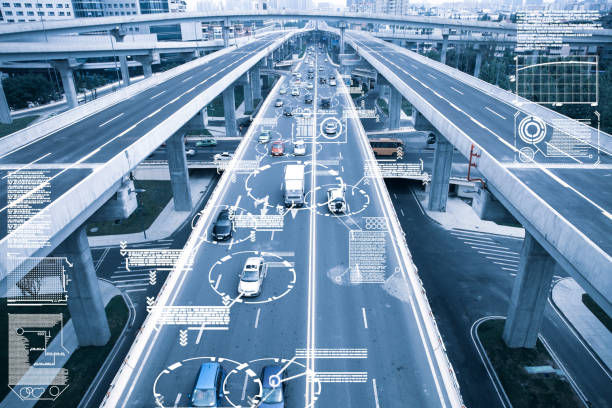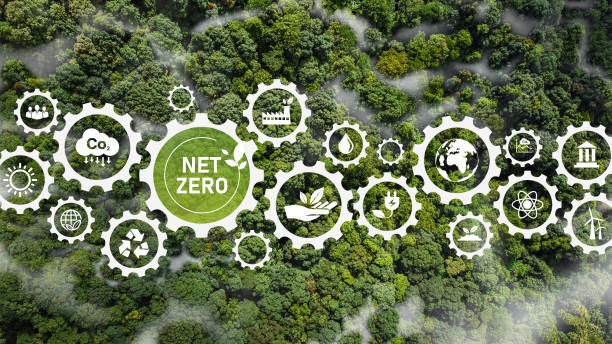"Reducing Your Carbon Footprint: Simple Steps for a Greener Lifestyle":
- The Moolah Team
- Jul 11, 2023
- 10 min read
This blog post will offer practical tips and suggestions for individuals to reduce their carbon footprint and live a more sustainable lifestyle.
We will cover topics like energy-efficient home upgrades, eco-friendly transportation, and reducing single-use plastics.
I. Introduction: Understanding the Importance of Reducing Your Carbon Footprint
Reducing your carbon footprint means taking actions to reduce the amount of greenhouse gases that are released into the atmosphere as a result of your daily activities. This is important because greenhouse gases, such as carbon dioxide, contribute to global warming and climate change. As individuals, we can make a significant impact on reducing greenhouse gas emissions by making simple changes to our daily routines and choices.
As our planet faces the threat of climate change, it's important to understand the significance of reducing our carbon footprint. The Earth's temperature has increased by about 1.1°C since pre-industrial times, and this warming trend is accelerating due to the increase in greenhouse gas emissions from human activities. This has resulted in more frequent and intense weather events, rising sea levels, and other environmental problems that affect our health, well-being, and future.
By reducing our carbon footprint, we can help to slow down the pace of climate change and preserve the Earth's natural resources for future generations. This involves making changes to the way we live, work, and play. While some of these changes may seem small, they can add up to make a big difference in the fight against climate change.
In this blog post, we will cover several simple and practical steps that individuals can take to reduce their carbon footprint and live a more sustainable lifestyle. We will focus on energy-efficient home upgrades, eco-friendly transportation, and reducing single-use plastics. These steps are easy to implement and can help you make a positive impact on the environment.
In the next sections of this post, we will provide more detailed information on these topics, including specific actions you can take to reduce your carbon footprint. By following these tips and suggestions, you can join the effort to combat climate change and make a difference in the world. Let's get started!

II. Energy-Efficient Home Upgrades: Simple Steps for a Greener Home
Making your home more energy-efficient is a great way to reduce your carbon footprint and save money on your energy bills. There are many simple steps you can take to make your home more energy-efficient, including upgrading your lighting, heating and cooling systems, and insulation.
A. Lighting
One of the easiest and most effective ways to reduce your energy usage is by switching to LED light bulbs. LED bulbs use up to 80% less energy than traditional incandescent bulbs and last up to 25 times longer. Additionally, turning off lights when you're not using them or using natural light whenever possible can also help reduce your energy consumption.
B. Heating and Cooling
Heating and cooling your home accounts for a significant portion of your energy usage. By adjusting your thermostat settings by just a few degrees, you can save a significant amount of energy and money on your bills. You can also upgrade to energy-efficient appliances, such as air conditioners and heaters, to further reduce your energy usage.
C. Insulation
Proper insulation is essential for maintaining a comfortable temperature in your home and reducing energy waste. Adding insulation to your walls and attic can help keep your home warm in the winter and cool in the summer, and sealing air leaks can prevent heat from escaping in the winter and cool air from escaping in the summer.
By taking these simple steps, you can significantly reduce your home's energy usage and carbon footprint. Additionally, many of these upgrades can be done on a budget, making them accessible to everyone.
Remember, small changes can add up to make a big impact. Even something as simple as switching to energy-efficient light bulbs or turning off lights when you're not using them can make a difference in your energy usage and carbon footprint. By making your home more energy-efficient, you can save money on your bills while also doing your part to help the environment.
In the next section, we will cover eco-friendly transportation and ways to reduce your carbon footprint while on the go.

III. Eco-Friendly Transportation: Simple Steps for a Greener Commute
Transportation is one of the largest contributors to greenhouse gas emissions, but there are many simple steps you can take to reduce your carbon footprint while on the go.
A. Public Transportation
One of the easiest ways to reduce your carbon footprint is by taking public transportation, such as buses or trains. Public transportation is more energy-efficient than driving alone, and it also helps reduce traffic congestion and air pollution.
B. Cycling and Walking
Cycling and walking are both great alternatives to driving, and they are also great for your health. If you live close enough to work or school, consider biking or walking instead of driving. Not only will you reduce your carbon footprint, but you'll also get some exercise and fresh air.
C. Carpooling and Car-Sharing
If you must drive, consider carpooling with co-workers or friends. Carpooling can significantly reduce the number of cars on the road, and it also helps you save money on gas and parking. Another option is car-sharing, where you can rent a car only when you need it instead of owning one yourself.
D. Electric Vehicles
If you're in the market for a new car, consider an electric vehicle (EV) or a hybrid. EVs produce zero emissions, making them the most eco-friendly option for transportation. Additionally, many governments offer incentives for purchasing an EV, making them more affordable than ever.
By taking these simple steps, you can significantly reduce your carbon footprint and make a positive impact on the environment. Even if you can't completely eliminate your carbon footprint, every little bit helps.
In the next section, we will cover ways to reduce your use of single-use plastics, which are a major contributor to environmental pollution.

IV. Reducing Single-Use Plastics: Simple Steps for a Greener Lifestyle
Single-use plastics, such as straws, utensils, and plastic bags, have become a major contributor to environmental pollution. By making small changes to reduce your use of these items, you can help reduce the amount of plastic waste that ends up in landfills and oceans.
A. Bring Your Own Reusable Bags
One of the easiest ways to reduce your use of single-use plastics is by bringing your own reusable bags when you go shopping. Many stores now offer reusable bags for purchase, or you can make your own from old t-shirts or other materials.
B. Use Reusable Water Bottles and Cups
Instead of buying bottled water or using disposable cups, consider using a reusable water bottle or cup. Not only will you reduce your plastic waste, but you'll also save money in the long run.
C. Say No to Straws and Utensils
When eating out, ask for your drink without a straw and consider bringing your own utensils if you'll be eating on the go. Many companies now make reusable straws and utensils that you can carry with you.
D. Choose Products with Minimal Packaging
When shopping for groceries or other products, choose items with minimal packaging. Look for products that are packaged in cardboard or paper instead of plastic.
E. Recycle Properly
If you do use single-use plastics, be sure to recycle them properly. Check with your local recycling program to see what types of plastics are accepted and how they should be sorted.
By taking these small steps, you can significantly reduce your use of single-use plastics and make a positive impact on the environment. Remember, every little bit helps, and by making small changes in your daily life, you can make a big difference in the fight against environmental pollution.
In the next section, we will cover ways to reduce your energy consumption at home through energy-efficient upgrades and practices.

V. Energy-Efficient Home Upgrades: Simple Steps for a Greener Lifestyle
Reducing your energy consumption at home not only helps the environment, but it can also save you money on your utility bills. Here are some simple steps you can take to make your home more energy-efficient.
A. Upgrade to Energy-Efficient Appliances
One of the biggest energy consumers in your home is your appliances. Consider upgrading to Energy Star-certified appliances, which are designed to use less energy and water. You can also look for appliances with features like a delayed start or automatic shut-off, which can help reduce your energy consumption even further.
B. Install Energy-Efficient Windows and Doors
Drafty windows and doors can let out heat or cool air, causing your heating and cooling system to work harder and use more energy. By upgrading to energy-efficient windows and doors, you can improve your home's insulation and reduce your energy usage.
C. Insulate Your Home
Proper insulation can also help reduce your energy consumption. Insulate your walls, floors, and attic to prevent heat or cool air from escaping. You can also consider adding weather-stripping around doors and windows to further improve insulation.
D. Use Energy-Efficient Lighting
Switching to energy-efficient lighting, such as LED bulbs, can significantly reduce your energy consumption. These bulbs use less energy and last longer than traditional incandescent bulbs.
E. Install a Programmable Thermostat
A programmable thermostat allows you to set the temperature of your home according to your schedule. By setting the temperature higher or lower when you're not at home, you can save energy and money on your utility bills.
By implementing these energy-efficient upgrades and practices, you can significantly reduce your energy consumption at home and make a positive impact on the environment. Additionally, many of these upgrades can pay for themselves over time through energy savings.
In the next section, we will cover eco-friendly transportation options that can further reduce your carbon footprint.

VI. Eco-Friendly Transportation: Simple Steps for a Greener Lifestyle
Transportation is a major contributor to greenhouse gas emissions, but there are simple steps you can take to reduce your carbon footprint while getting around.
A. Walk, Bike, or Take Public Transportation
One of the simplest ways to reduce your carbon footprint is to walk, bike, or take public transportation whenever possible. Not only does this reduce your carbon emissions, but it can also help you save money on gas and parking.
B. Carpool or Use a Ride-Sharing Service
If you need to drive, consider carpooling with co-workers or using a ride-sharing service like Uber or Lyft. By sharing rides, you can reduce the number of cars on the road and the amount of carbon emissions.
C. Choose a Fuel-Efficient Vehicle
If you need to purchase a new vehicle, consider choosing a fuel-efficient option like a hybrid or electric car. These vehicles use less gas or no gas at all, reducing your carbon emissions and saving you money on gas in the long run.
D. Maintain Your Vehicle
Properly maintaining your vehicle can also help reduce your carbon emissions. Keep your tires inflated to the recommended pressure, get regular oil changes and tune-ups, and replace air filters when necessary. A well-maintained vehicle will run more efficiently and produce fewer emissions.
E. Plan Your Trips
By planning your trips in advance and grouping your errands together, you can reduce the amount of driving you need to do. This not only reduces your carbon emissions, but it can also save you time and money.
Incorporating these eco-friendly transportation options into your daily routine can significantly reduce your carbon footprint and make a positive impact on the environment. By choosing to walk, bike, carpool, or use a fuel-efficient vehicle, you can help reduce the amount of carbon emissions and create a more sustainable future.
In the next section, we will cover simple steps you can take to reduce your use of single-use plastics.

VII. Reducing Single-Use Plastics: Simple Steps for a Greener Lifestyle
Single-use plastics are a major contributor to pollution and the degradation of the environment. By reducing your use of single-use plastics, you can help reduce your carbon footprint and protect the planet.
A. Bring Reusable Bags and Containers
One of the easiest ways to reduce your use of single-use plastics is to bring your own reusable bags and containers when shopping or getting takeout. You can use cloth or canvas bags for groceries and bring your own containers for takeout food. By doing so, you can eliminate the need for single-use plastic bags and containers.
B. Avoid Plastic Water Bottles
Another way to reduce your use of single-use plastics is to avoid plastic water bottles. Instead, use a reusable water bottle made of stainless steel or glass. These bottles are not only more environmentally friendly, but they also keep your water cool for longer periods of time.
C. Say No to Straws
Straws are one of the most common single-use plastic items found in the ocean. You can help reduce the number of straws in the environment by saying no to straws when eating out or purchasing a reusable straw made of stainless steel or bamboo.
D. Choose Alternatives to Single-Use Plastics
There are a number of alternatives to single-use plastics that you can use in your daily life. For example, you can use reusable silicone bags instead of plastic sandwich bags, use beeswax wraps instead of plastic wrap, and use bamboo utensils instead of plastic ones.
E. Recycle Properly
If you do need to use single-use plastics, make sure to recycle them properly. Check with your local recycling program to see which types of plastics are accepted and how they should be sorted.
By reducing your use of single-use plastics, you can help protect the environment and reduce your carbon footprint. By bringing reusable bags and containers, avoiding plastic water bottles, saying no to straws, choosing alternatives to single-use plastics, and recycling properly, you can make a significant impact on the health of the planet.
In conclusion, reducing your carbon footprint and living a more sustainable lifestyle is not just important for the environment, but it can also save you money and improve your overall well-being. By making simple changes to your home, transportation, and consumption habits, you can create a positive impact on the planet and future generations. Start small, and gradually incorporate more eco-friendly habits into your daily routine. Together, we can work towards a greener and more sustainable future.

VIII. Conclusion: Taking Action for a Greener Future
As we come to the end of this guide, we hope that you have gained valuable insights on how to reduce your carbon footprint and live a more sustainable lifestyle. Every little step that you take, no matter how small, can make a significant difference in creating a greener future for ourselves and future generations.
In this guide, we have covered various topics, such as energy-efficient home upgrades, eco-friendly transportation, and reducing single-use plastics. We have highlighted the importance of making conscious choices that can help reduce our impact on the environment.
It is important to remember that reducing our carbon footprint is not just a personal responsibility, but a collective one. By sharing these tips and suggestions with others, we can encourage a larger movement towards a greener future.
We understand that transitioning to a more sustainable lifestyle may seem daunting at first, but every effort counts. We encourage you to start with small changes, such as switching to energy-efficient light bulbs or bringing your reusable shopping bags, and gradually incorporating more sustainable practices into your daily life.
By taking action today, we can pave the way for a better tomorrow, and make a positive impact on the planet. Let's work together towards a greener and more sustainable future!
Thanks for taking the time to read this guide on reducing your carbon footprint and living a more sustainable lifestyle. We hope that it has provided you with valuable insights and practical tips that you can apply in your daily life.
If you found this post helpful, be sure to subscribe to our newsletter for more content like this. Together, we can work towards a greener future and make a positive impact on the planet. Thanks a million for your support!
Best regards,
Moolah







Comments